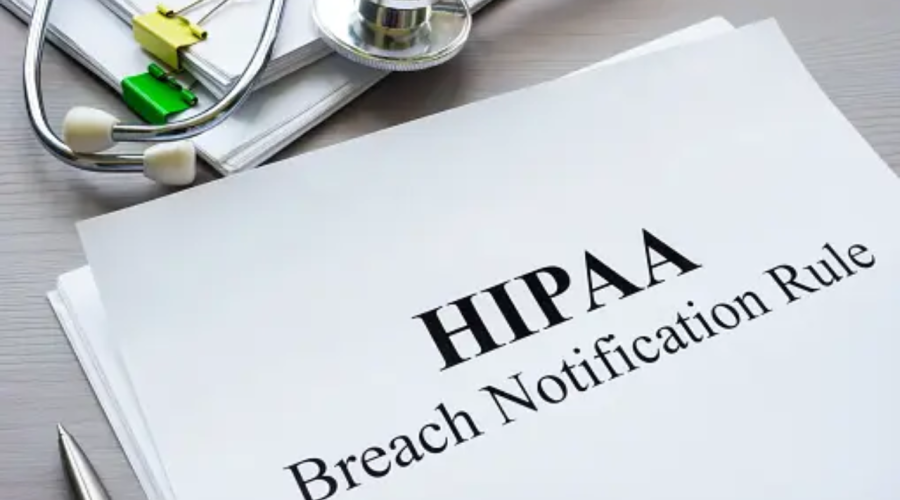HIPAA Breach Notification: What to Do in Case of a Data Breach
HIPAA Breach is a term that sends shivers down the spine of healthcare organizations. A HIPAA Breach occurs when there is an unauthorized access, use, or disclosure of Protected Health Information (PHI), compromising the security and privacy of patients’ data. The Health Insurance Portability and Accountability Act (HIPAA) sets strict guidelines on how to handle such breaches, and non-compliance can lead to severe penalties. This article will walk you through the steps you need to take in case of a HIPAA Breach to ensure you meet all regulatory requirements and mitigate the impact on your organization and patients.
Understanding HIPAA Breach Notification Rules
The HIPAA Breach Notification Rule requires covered entities and their business associates to notify affected individuals, the Secretary of Health and Human Services (HHS), and, in certain circumstances, the media, when there is a breach of unsecured PHI.
Key Points of the HIPAA Breach Notification Rule:
- Notification to Individuals: Must be provided without unreasonable delay and in no case later than 60 days following the discovery of a breach.
- Notification to HHS: For breaches involving 500 or more individuals, notification must be immediate. For breaches involving fewer than 500 individuals, entities can notify HHS annually.
- Notification to the Media: Required if a breach affects more than 500 residents of a state or jurisdiction.
Steps to Take in Case of a HIPAA Breach
Handling a HIPAA Breach requires a systematic approach to ensure all regulatory requirements are met and to protect the impacted individuals. Here are the steps to follow:
1. Contain and Assess the Breach
The first step in responding to a HIPAA Breach is to contain the incident and assess its scope and impact.
- Contain the Breach: Immediately contain the breach to prevent further unauthorized access. This might involve shutting down systems, revoking access, or other measures.
- Assess the Breach: Determine the nature of the breach, the type of information involved, and the extent of the breach. Identify how the breach occurred and whether it was a result of a malicious attack, negligence, or system failure.
2. Notify Affected Individuals
Once the breach is contained and assessed, you need to notify the affected individuals.
- Notification Content: The notification must include a brief description of the breach, the types of information involved, the steps individuals should take to protect themselves, what your organization is doing to investigate and mitigate the breach, and contact information for further inquiries.
- Delivery of Notification: Notifications must be provided in writing via first-class mail or email if the individual has agreed to electronic communication. In urgent cases, you may use telephone or other means.
3. Notify the Department of Health and Human Services (HHS)
Depending on the size of the breach, you will need to notify HHS either immediately or annually.
- Breaches Involving 500 or More Individuals: Must be reported to HHS without unreasonable delay and no later than 60 days from the discovery of the breach.
- Breaches Involving Fewer than 500 Individuals: Must be reported to HHS within 60 days of the end of the calendar year in which the breach was discovered.
4. Notify the Media
If the HIPAA Breach affects more than 500 residents of a state or jurisdiction, you must notify prominent media outlets serving that area.
- Media Notification Content: Should include the same information as the individual notification and should be issued promptly.
5. Document the Breach and Response
Proper documentation of the HIPAA Breach and your response is critical for compliance and future reference.
- Incident Report: Document all details of the breach, including how it occurred, what information was compromised, and how it was contained.
- Response Actions: Record all actions taken to notify affected parties, HHS, and the media, along with timelines and methods used.
6. Mitigation and Prevention
After managing the immediate response to a HIPAA Breach, focus on mitigating the impact and preventing future breaches.
- Mitigation Steps: Offer credit monitoring services to affected individuals if financial information was involved, and take steps to recover any exposed data.
- Review Policies and Procedures: Conduct a thorough review of your security policies and procedures to identify and rectify any weaknesses.
- Training and Awareness: Enhance employee training programs to ensure they understand their role in protecting PHI and recognizing potential security threats.
Importance of a HIPAA Breach Response Plan
Having a well-defined HIPAA Breach response plan is essential for efficient and compliant handling of breaches. A robust plan should include:
- Incident Response Team: Designate a team responsible for managing HIPAA Breaches, including roles and responsibilities.
- Communication Plan: Establish clear communication protocols for internal and external notifications.
- Training and Drills: Regularly train your staff on the breach response plan and conduct drills to test its effectiveness.
Legal and Financial Implications of a HIPAA Breach
Failing to comply with HIPAA Breach notification requirements can result in significant legal and financial consequences.
- Fines and Penalties: The HHS Office for Civil Rights (OCR) can impose fines ranging from $100 to $50,000 per violation, with a maximum annual penalty of $1.5 million for repeated violations.
- Reputation Damage: Public knowledge of a HIPAA Breach can severely damage your organization’s reputation and lead to loss of patient trust.
- Lawsuits: Affected individuals may file lawsuits for damages caused by the breach, leading to costly legal battles.
Proactive Measures to Prevent HIPAA Breaches
Preventing HIPAA Breaches requires a proactive approach to security and compliance.
- Regular Risk Assessments: Conduct regular risk assessments to identify and address vulnerabilities in your systems and processes.
- Encryption and Access Controls: Use encryption to protect PHI and implement strict access controls to limit who can view and handle sensitive information.
- Employee Training: Regularly train employees on HIPAA compliance, data security best practices, and how to recognize potential threats.
- Audit and Monitoring: Implement audit and monitoring mechanisms to detect suspicious activities and ensure compliance with security policies.
A HIPAA Breach can have serious implications for your organization, but knowing how to respond effectively can mitigate the damage and ensure compliance with regulatory requirements. By following the steps outlined in this article, you can manage a HIPAA Breach efficiently and protect the privacy and security of your patients’ data.
At eStreet Security, we specialize in helping healthcare organizations prevent and respond to HIPAA Breaches. Contact us today to learn how we can support your compliance efforts and enhance your data security practices. Secure your patient data with eStreet Security – your trusted partner in cybersecurity.



